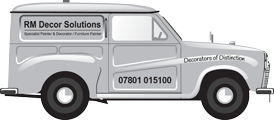Identification
Lengthy cracks need investigating. Distorted internal door frames that cause doors to jam, evident gaps to skirting boards, and floors that slope where walls have settled, are also potential signs of structural movement. Hairline cracking is sometimes evident where internal walls abut main walls.
Implications
Where cracks are tapered and more than about 3mm wide, or where the plaster on each side of the crack is not level, it’s more likely to be indicative of structural movement — often due to a problem elsewhere in the property (i.e. where bay windows or external walls have bowed out). Where an internal wall has been ‘knocked through’ but the loading above has not been properly supported, the floors and walls upstairs may have had distorted and adjacent ceilings may have cracked as a consequence.
However, seasonal hairline cracking that is often indicative of ‘differential movement’ is not usually a serious concern. Where adjoining walls are made from different materials – where internal timber stud walls meet main walls of masonry – they may expand or contract at different rates, too. Similarly, period properties with shallow foundations tend to move slightly over the course of the year and it’s not unusual for small cracks to develop at joints.
Remedial work
- Differential movement can often be tackled by raking out cracks and applying flexible mastic or filler.
- Where walls have been removed without adequate support to the loadings above, or there is movement to bays or the main walls, a structural engineer will need to advise on remedial works.
- Load-bearing internal walls that do not have insufficient foundation depths could require strengthening or the construction of new supporting brick piers or buttresses.
